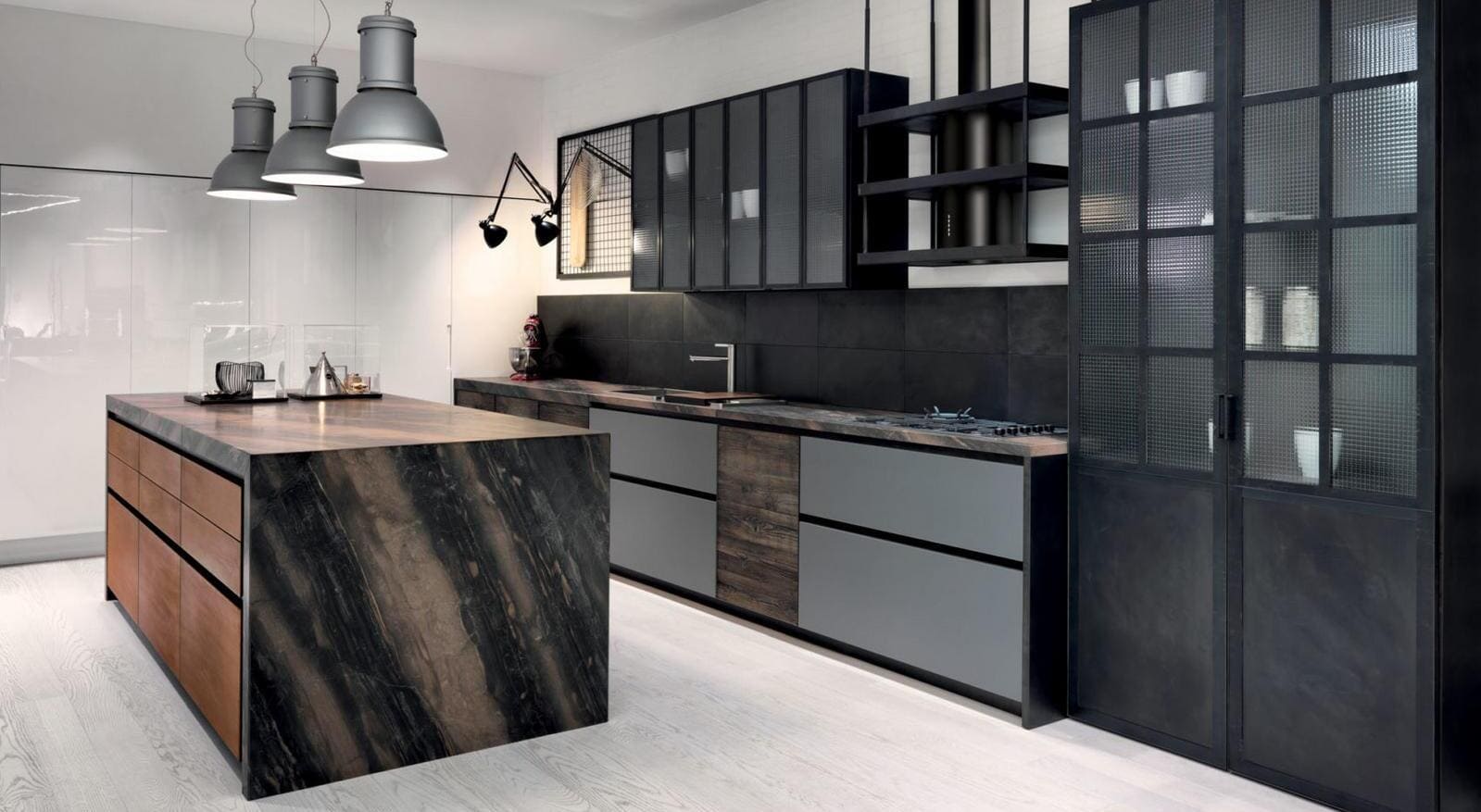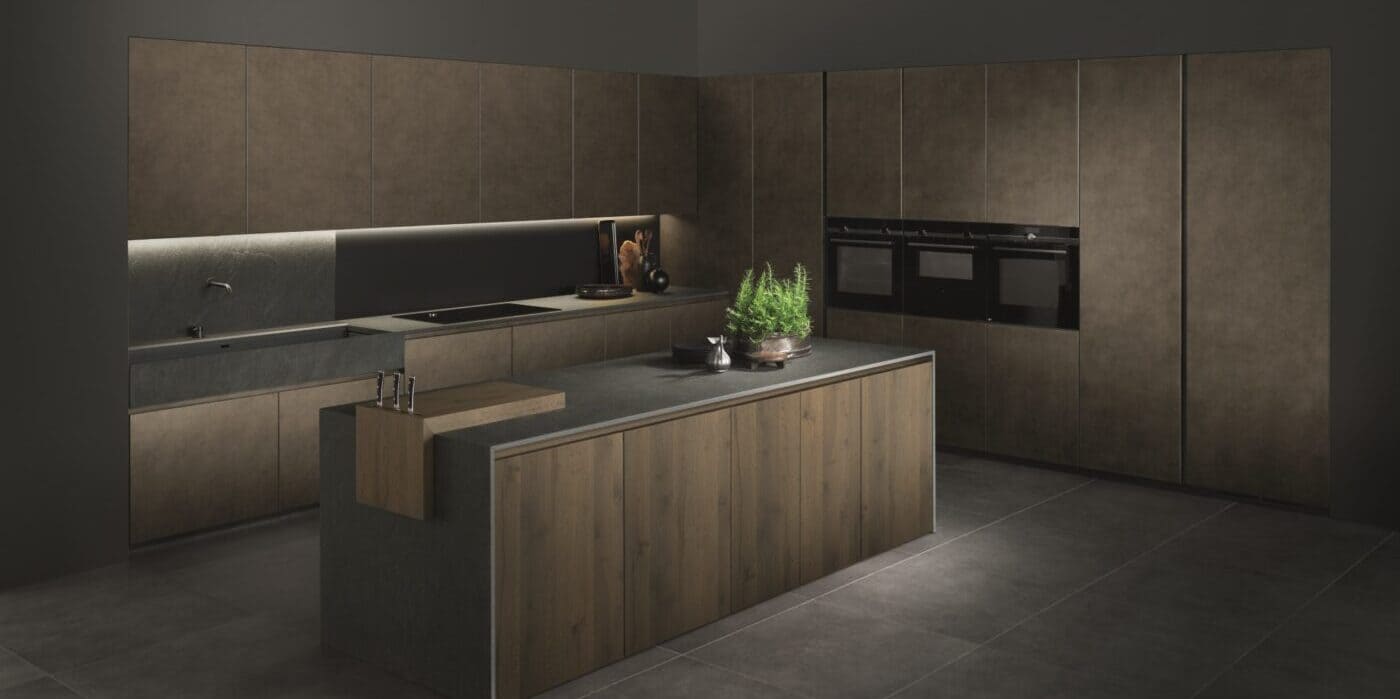Industrial-style kitchen furnishing guide
Exposed bricks and pipes, reused components, metal accents: the industrial-style kitchen has become a popular choice for modern homes, echoing the charm of historic New York warehouses turned into lofts and artist studios in the 1980s, marking the birth of this interior design trend. If you're considering industrial furniture, follow this guide to infuse your kitchen with the distinctive ambiance of this style.
Colors and Materials

The industrial design palette emphasizes darker shades like black, navy, brown, and gray, applied in their rawest forms to create a "weathered" look. However, to prevent the kitchen from becoming too dark, it's crucial to add balanced touches of color in accessories: hues of rust, red, and orange, reminiscent of an old factory, are popular bright accents.
Another way to create a cozy atmosphere is by incorporating natural materials, which can be alternated with darker colors: primarily wood, followed by metals such as steel, copper, and aluminum. The visual and textural contrast leads to truly evocative compositions.
Storage Solutions

A top-notch industrial kitchen places a high value on both aesthetics and practicality: open-front containers, vintage glass-front cupboards, as well as counters and movable carts, are hallmarks of industrial design. Despite their simple, clean lines, these elements are robust and designed to blend seamlessly, creating a dynamic and unique environment for those who enjoy spending time in the kitchen and desire to make a statement.
Lighting

One of the most crucial elements of an industrial-style kitchen is lighting, both natural and artificial. Large windows with minimal frames allow ample natural light, while wrought iron fixtures or ceiling-hung lamps with exposed cables add to the industrial vibe. Spotlights, oversized floor lamps, and illuminated plaques are key features that illuminate the pathway to your unique style.

